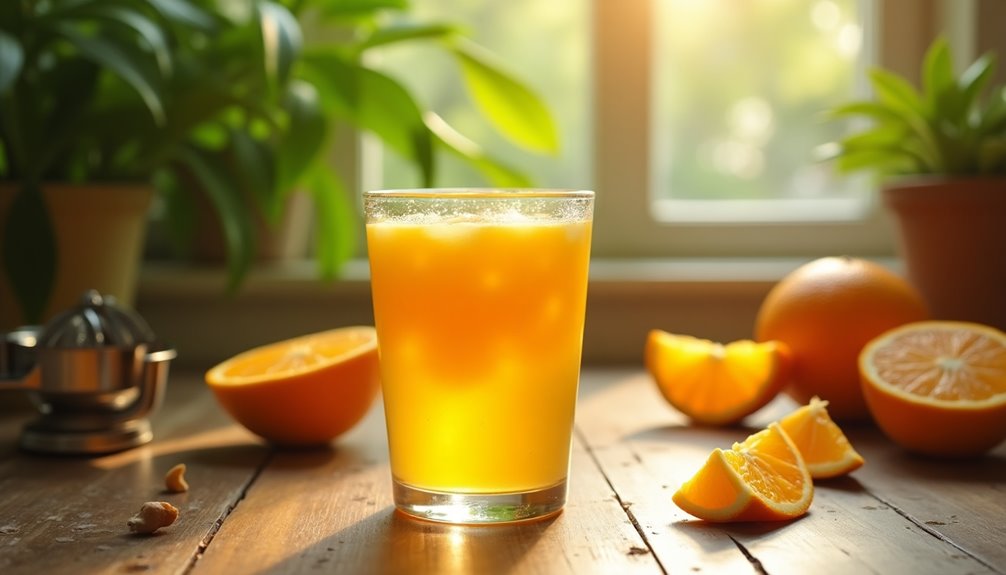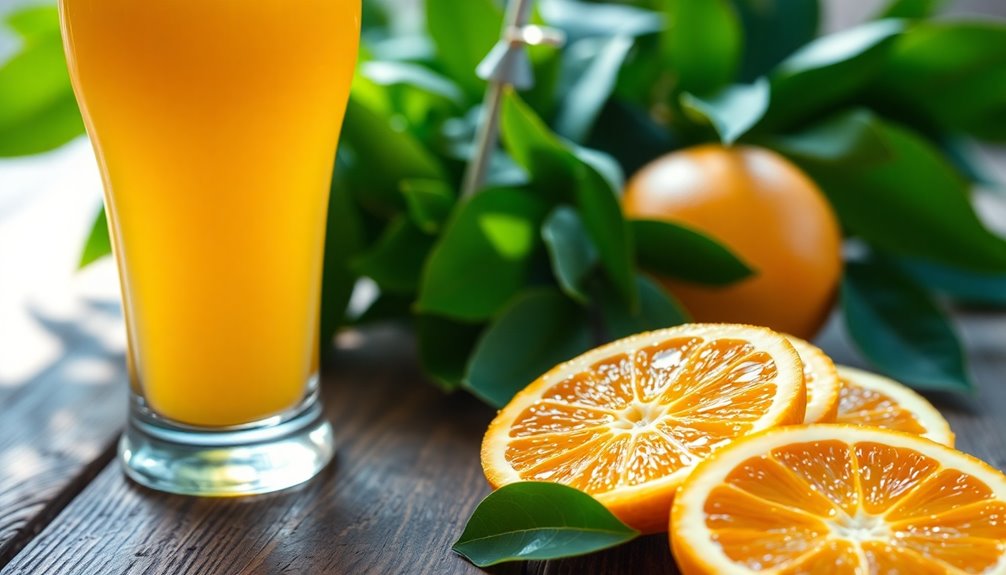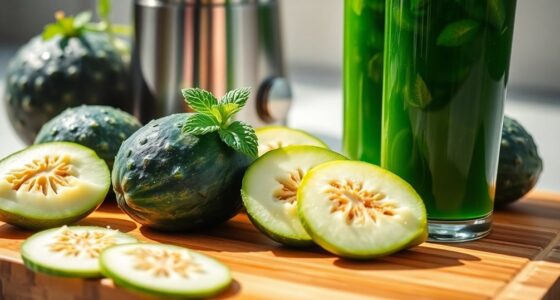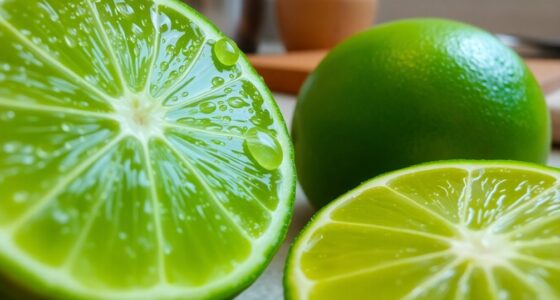To say orange juice in Spanish, you’d use “jugo de naranja” in most Latin American countries. However, in Spain, it’s referred to as “zumo de naranja. ” The term “jugo” is popular in Mexico and many other regions, while “zumo” is the preferred word in Spain. Each region has its unique twist, making drinking orange juice a cultural experience. Stick around, and you might discover more fascinating details about this refreshing beverage! In addition to orange juice, beverages like apple juice also have regional variations in their terminology. If you’re curious about how to say apple juice in Spanish, the phrase would be “jugo de manzana” in Latin America, whereas in Spain, you might hear “zumo de manzana. ” These differences not only highlight linguistic diversity but also showcase how food and drink are deeply intertwined with cultural identities across the Spanish-speaking world.
Key Takeaways
- In most Spanish-speaking countries, orange juice is called "jugo de naranja."
- In Spain, the preferred term is "zumo de naranja."
- In the Dominican Republic and Puerto Rico, it is referred to as "jugo de china."
- "Jugo" means juice in general, while "zumo" is specific to Spain.
- Understanding these variations enriches cultural appreciation of the beverage.

When you think of a refreshing breakfast drink, orange juice often comes to mind. This bright, tangy beverage isn't only delicious but also packed with vitamin C, making it a popular choice for many. If you're interested in how to say orange juice in Spanish, you'll discover that it's more nuanced than you might expect.
In most Spanish-speaking countries, "orange juice" translates to "el jugo de naranja." This phrase is widely understood and used, especially in Latin America. When you visit Mexico, for instance, you might hear someone say "jugo de naranja" when ordering their favorite breakfast drink. The word "jugo" is commonly used here to refer to juice in general. So, when you want to say orange juice in a Mexican context, just remember to go with "jugo de naranja."
However, if you find yourself in Spain, you may notice a slightly different term. In this region, people often prefer saying "el zumo de naranja." The term "zumo" is the Spanish equivalent of juice, but it's used more frequently in Spain than in Latin America. So, if you're traveling there and want to order your refreshing drink, just ask for "zumo de naranja," and you'll likely receive a delicious glass of the same vibrant beverage you love.
As you explore the Caribbean, you'll discover another variation. In the Dominican Republic and Puerto Rico, locals refer to orange juice as "jugo de china." This term might surprise you, but it's a beloved way to order orange juice in those regions. The word "china" refers to the orange fruit itself, which adds a unique twist to how you say orange juice there. If you ever find yourself in these beautiful islands, don't hesitate to ask for "jugo de china" when you're craving that zesty refreshment.
Understanding these regional variations of "el jugo de naranja" or "el zumo de naranja" can greatly enhance your communication and appreciation of the cultures you encounter. It's fascinating how a simple phrase can differ from one country to another, and being aware of these differences can enrich your conversations.
Whether you're sipping on "jugo" in Mexico or "zumo" in Spain, you're partaking in a cultural experience that's both delicious and meaningful.
Frequently Asked Questions
How Do Mexicans Say Orange Juice?
When you're in Mexico and want to order orange juice, you'd say "el jugo de naranja."
This phrase is straightforward, with "jugo" meaning juice and "naranja" meaning orange.
You'll find it's a popular choice at breakfast, often enjoyed fresh and squeezed.
If you're at a café or restaurant, just remember this phrase, and you'll be able to enjoy a refreshing glass of orange juice like the locals do!
How Do You Order Orange Juice in Spanish?
Imagine the sun rising, casting golden hues as you sip a refreshing drink.
When you're ready to order orange juice in Spanish, say, "Quisiera un jugo de naranja, por favor."
If you're in Spain, switch it up to "Quisiera un zumo de naranja."
Don't forget to specify if you want it fresh by adding "fresco."
Practicing these phrases will boost your confidence and make your experience in Spanish-speaking countries much smoother.
Enjoy!
Is It Juice or Juice?
When you're debating whether it's juice or juice, remember that the context matters.
If you're talking about drinks, you're likely referring to a liquid extracted from fruits. However, if you're discussing something else, like a play on words, the meaning could shift.
It's all about how you use it. So, pay attention to your surroundings and the conversation to ensure you're on the same page with others.
What Do They Call Orange Juice in Spain?
Imagine you're sitting at a café in Madrid, enjoying the sun. When you order orange juice, you'll ask for "un zumo de naranja."
In Spain, "zumo" is the preferred term, highlighting the juice aspect. While "jugo" is also understood, especially in Latin America, you'll find that locals favor "zumo" in everyday conversation.
Conclusion
So, next time you're sipping on that refreshing glass of orange juice, remember it's "jugo de naranja" in Spanish. Just like the vibrant hue of the juice symbolizes warmth and vitality, learning a new language brings a burst of energy to your life. Each word you master adds a splash of color to your communication, connecting you to new cultures and experiences. Embrace this journey, and let the sweet taste of knowledge invigorate your world!
Cindy thoroughly researches juicing trends, techniques, and recipes to provide readers with practical advice and inspiration. Her writing style is accessible, engaging, and designed to make complex concepts easy to understand. Cindy’s dedication to promoting the advantages of juicing shines through her work, empowering readers to make positive changes in their lives through the simple act of juicing.

















